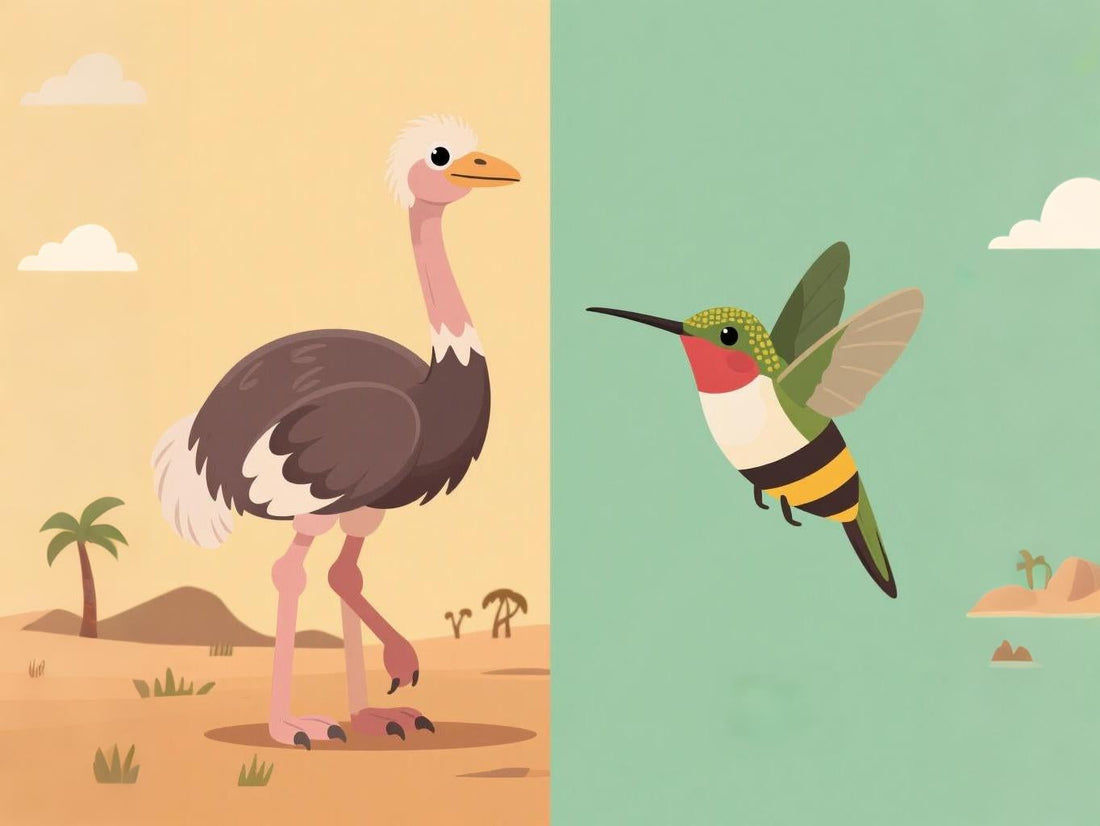Miracles of Nature: The World's Smallest and Largest Birds
TaylorAlice
Nature, like a master artisan, paints a breathtaking tapestry of life with astonishing diversity. Within this vibrant canvas, the avian world presents a striking evolutionary drama of extremes—from the coin-sized Bee Hummingbird to the human-sized Ostrich, each embodying unique survival strategies that defy imagination. Let us explore these biological marvels through the lens of science.
The World's Smallest Bird
Deep in Cuba's tropical forests thrives nature's most delicate aerial wonder—the Bee Hummingbird. Measuring merely 2-2.4 inches and weighing as little as two paperclips, this feathered jewel showcases evolutionary engineering at its finest. Its specialized siphon-like beak and forked tongue—covered in microscopic grooves—can dart 15 times per second, completing a flower visit in 0.3 seconds. This hyper-efficient feeding system fuels an extraordinary metabolism: Daily nectar intake equals 150% of its body weight, requiring visits to over 1,500 flowers—equivalent to a human consuming 100 kg (220 lbs) of food daily.

To survive this energy drain, the species employs radical thermoregulation: maintaining 106°F daytime body heat for flight muscles while slashing nighttime metabolism to 1/15th normal levels. Such adaptations allow it to persist in Cuba's shrinking woodlands.
The World's Largest Bird
In stark contrast stands Africa's flightless titan—the Ostrich. Reaching 2.75 m (9 ft) tall and 150 kg (330 lbs), this feathered Goliath rewrote avian rulebooks. Its vestigial wings now serve as stabilizers for a body built for terrestrial dominance. Unique two-toed feet—equipped with elastic tendons and hoof-like pads—propel 3.5 m (11.5 ft) strides at 70 km/h (43.5 mph), outpacing sprinters by 2.5x.

Their survival toolkit astounds:
- Fortress Eggs: 15 cm (6-inch) thick shells withstand 120 kg (265 lbs) of pressure
- Desert Adaptations: Vertical slit pupils reduce solar glare, while 3 km (1.86 mi) vision acts as natural surveillance
- Thermal Mastery: Fluffy plumage insulates against 131°F heat, while nighttime vasoconstriction maintains 101°F core temperature
From Cuba's forests to African savannas, these 2-gram to 150-kg wonders embody Darwin's "survival of the fittest" through divergent paths. As hummingbird wings hum and ostrich feet drum across continents, they remind us of biodiversity's fragility. These living masterpieces—honed over 400 million years—now depend on humanity's wisdom to ensure their epic continues in Earth's grand story of life.
